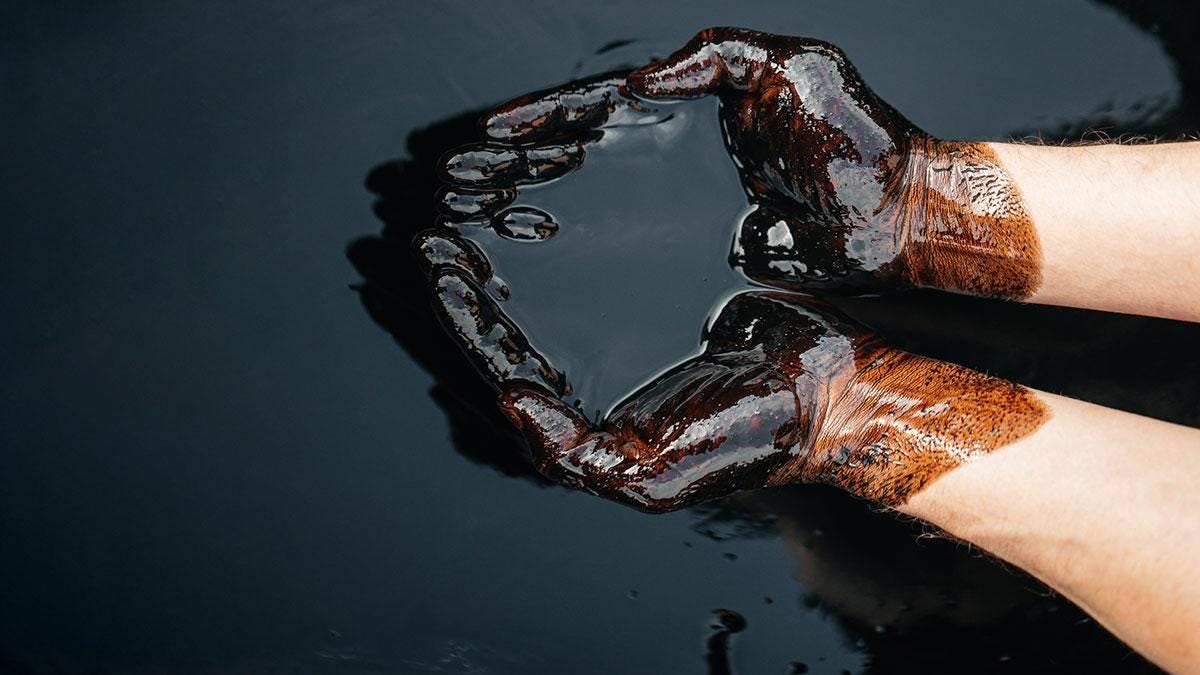The vast majority of oil trades are made in dollars.
At the time of writing, it’s about $82 per barrel (WTI Crude Oil).
Other countries such as China have been trading oil in yuan, but the market is small compared to the US dollar trading.
But why is this the case?
USA & Oil
It’s a well-known fact that the US has put oil at the heart of its foreign policy.
And for good reason.
Oil is often referred to as ‘black gold’ and is the most valuable physical commodity on the earth.
It’s the foundation of modern life — the basis for virtually every product and industry around us.
In the 1960s and 1970s as the world began to modernise, demand for oil began to skyrocket.
Due to oil-rich reserves and cheap labour, by 1972, 83% of American oil imports came from the Middle East.
In order to establish some kind of control against the oil-hungry Western nations, OPEC was formed, which is an organisation of oil-producing countries that began to cooperate in order to protect their countries and profits.
In 1973, an inevitable oil crisis struck, when King Faisal of Saudi Arabia blocked all oil trade to nations that had supported Israel during the Yom Kippur War – including the USA.
The heavy reliance on the Middle East for oil meant that the US had no choice but to try and strike a deal, or force trade.
Despite the tensions, the US managed to bargain a deal with Saudi Arabia, and the oil embargo was lifted in 1974 (after the US pressured Israel into negotiating a deal with Syria).
By 1975, Saudi Arabia and the US had signed over $2bn worth of military contracts, including 60 fighter jets, securing the truce.
Saudi Arabia clearly benefited from this deal, and managed to obtain a huge amount of military power and backing in the region.
But what the US gained was more valuable — a significant foothold in the oil economy, and an assurance that oil would be traded in dollars.
Shortly after, all countries within OPEC were convinced to price their oil in dollars, and also to keep their prices lower.
Any countries that wanted to buy oil from the Middle East would now need to buy it in US dollars.
The Petrodollar
But why would it matter if oil is traded in dollars?
Surely oil being bought and sold in any currency makes no difference, it just matters who owns the most of it.
However, this is not the case.
Due to the US ensuring that oil is traded in dollars, if a country wants oil, it’s easiest and most cost-efficient for them to use dollars.
This ensures that all countries have a large amount of dollars in their reserves, ready to buy oil, and the dollar creeps in as the global currency.
These dollars are called ‘petrodollars’.
The USA’s foreign policy dating back since The Marshall Plan means that now approximately 58% of all world reserves are in dollars.
The result is that every single country in the world has an incentive to use dollars (to buy oil), and most importantly an interest in America’s economy.
If the dollar ceased to exist, then 58% of all money kept in global reserves would be gone, and essentially the world economy as we know it would end.
The US has used its currency to mark its territory. This is an important point to remember as it demonstrates a deeper purpose to currency.
It’s also significant that China is starting to trade oil contracts in yuan, which has been coined petroyuan in recognition of the similarities.
This is the first in a series of newsletters in Unfair Finance on Dollar Dominance.





